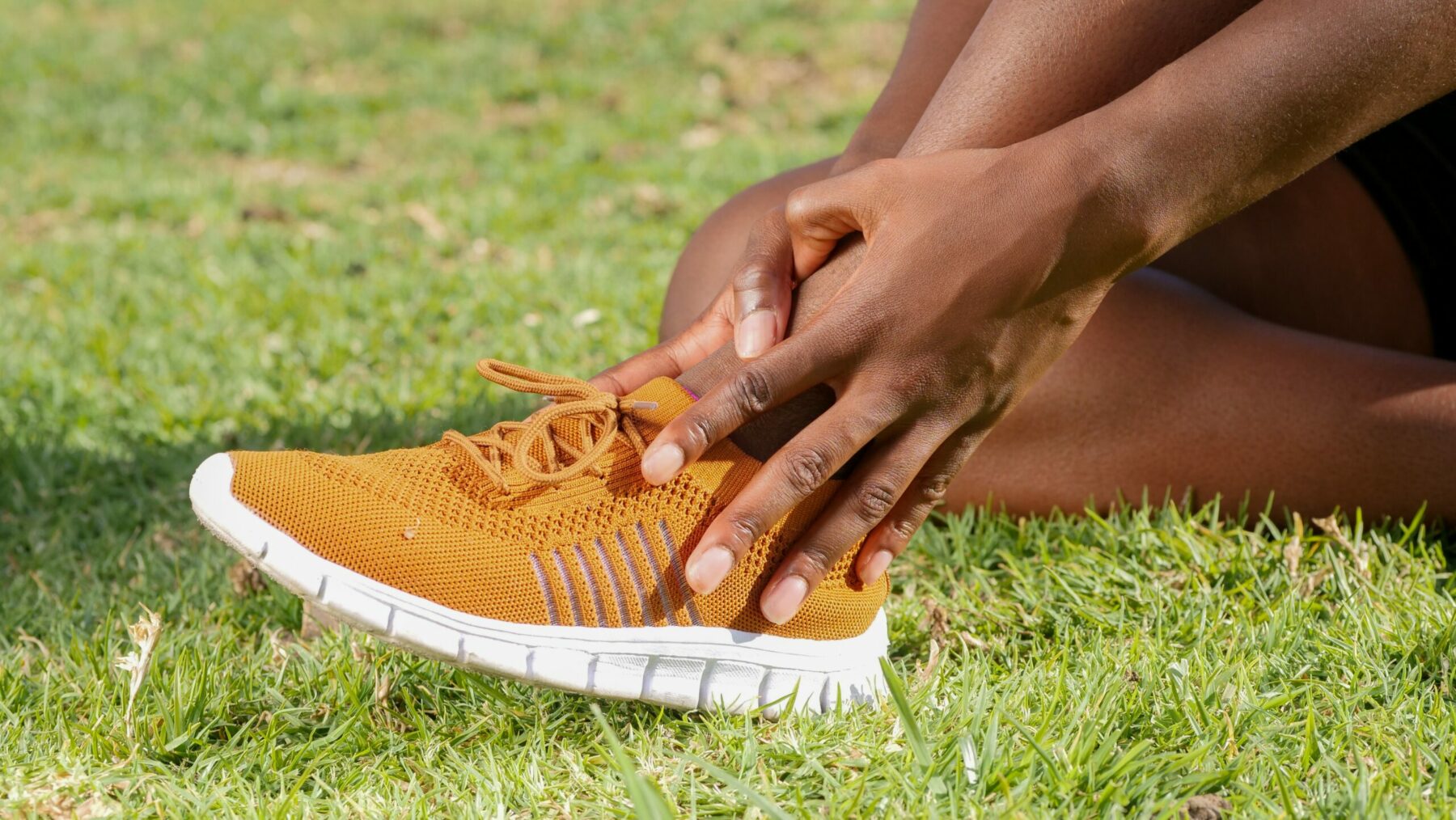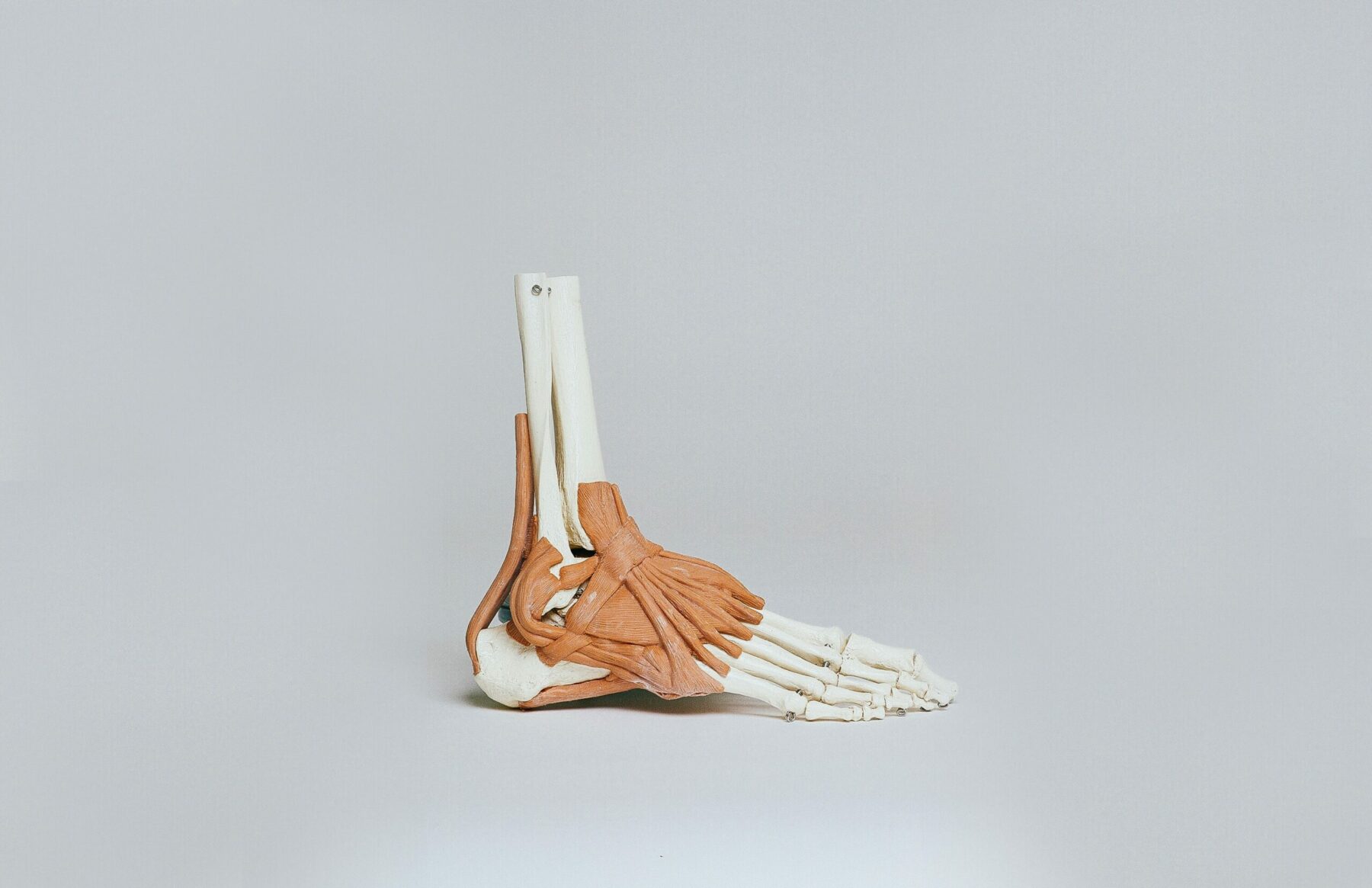How to Treat an Ankle Sprain

My wife and I recently spent an afternoon exploring the parks in downtown Austin. We walked along the river and listened to live music on the Pfluger Pedestrian Bridge. The city felt alive and reinforced our decision to move here.
The trails were full of people running. Even the river was busy with people in kayaks and on paddleboards. As a physical therapist, I love seeing everyone moving and exercising, but that also means there will be a few injuries.
To say that ankle sprains are common would be a gross understatement. There are around 23,000 ankle sprains every day in the U.S. Who hasn’t “rolled” their ankle? If you play basketball there’s no escaping it. But, it’s not just athletes. I’ve rolled my ankle stepping off a curb (of course, I played it cool and walked it off in an attempt to impress my wife). To make matters worse, if you’ve sprained your ankle once then you’re at an increased risk to do it again.
What is an ankle sprain?

A sprain is a stretching, twisting or tearing of a ligament. Ligaments are pieces of connective tissue that connect bone to bone and their main function is to hold everything in place and provide stability. So when you sprain or “roll” your ankle, you’re actually stretching or tearing a structure that’s responsible for keeping your ankle stable.
Sprains are classified into grades I, II and III.
- A Grade I (mild) sprain would be similar to what I mentioned earlier when I stepped off the curb “wrong.” It hurts and there may be mild swelling, but there isn’t any functional loss or instability. Recovery for this type of sprain takes about one to three weeks.
- With a Grade II (moderate) sprain, there will be noticeable swelling and even bruising. It may be painful to walk on and feel unstable. Recovery typically takes three to six weeks.
- Finally, Grade III (severe) is reserved for a complete tear. You’ll experience significant swelling, bruising, loss of function and instability. Recovery for this type of injury can take three to six months.
It is important to note that if you notice a bone deformity, severe pain or inability to walk, don’t hesitate to contact a healthcare provider immediately to prevent long-term effects.
Generally, a Grade I sprain doesn’t require treatment and therefore will usually go unreported. For a Grade II or III sprain, however, treatment is recommended. Exercise and balance training has been shown to decrease the risk of repetitive sprains. Repetitive sprains can lead to chronic ankle instability (CAI) which can put you at an increased risk for osteoarthritis.
This is what you want to avoid:

The most common sprain is an inversion/lateral ankle sprain. Your foot will roll inward, placing stress on the outside structures. The most commonly injured ligament in these instances is your anterior talofibular ligament (ATFL). Now think of your ATFL as a rubber band. When you sprain your ankle, it gets stretched and with each subsequent sprain, it’s stretched more. You may imagine it as floppy, and though that is not an entirely accurate description, it is still the last thing you want for your ATFL.
Rehabilitation
If you happen to be one of the unlucky 23,000 who sprained their ankle today, my first recommendation is to visit your physical therapist or physician. In the meantime, here’s a good place to start:
- P – Protect
- O – Optimal
- L – Loading
- I – Ice
- C – Compression
- E – Elevation
You were probably expecting PRICE, which isn’t a bad option, but I prefer POLICE. Why? Because immobilization for extended periods of time can lead to worse outcomes, short and long term. Start your rehabilitation exercises as soon as possible.
Protect your injured ankle. This may mean using crutches, getting a brace or modifying your activity level.
Optimal Loading is a systematic approach to exposing your injured ankle to stress. This could be weight-bearing as tolerated or using bands as a resistance exercise. Every person and each sprain is different, meaning dosage and programming will vary. See clinician for guidance.
Ice it for 10 minutes on, 10 minutes off and an additional 10 minutes on. This can be repeated every two hours for the first three days.
Compression works best with an air stirrup brace or lace-up support, as they are more effective at reducing swelling and decreasing recovery time. An ACE wrap should be your last choice.
Elevation may not have great evidence to support or reject this treatment technique but current wisdom still points in this direction. Keep the foot elevated on a stool or pillow to minimize swelling.
Exercises
Here are three initial exercises that I commonly prescribe for acute ankle sprains.
Ankle Alphabets: Video
Towel Calf Stretch: Video
Weight Shifting: Video
Start each exercise slowly, and use your pain as a guide. Discomfort is expected but moderate pain should be avoided. Even mild pain that doesn’t subside should be avoided. These are merely a starting point.
A physical therapist will create an individualized treatment plan and progress these activities as your body heals. An effective plan will challenge you in many different ways — balance, strength, neuromuscular, range of motion and conditioning. For runners, I incorporate the run/walk method starting on a treadmill and progressing outdoors.
Keep those ankles happy and healthy!
About the Author

Mark Denesha, PT, DPT is a Doctor of Physical Therapy and owner of Forever Forward Physical Therapy — Austin’s first, and only, fully equipped mobile PT clinic. FF PT services include manual therapy, strength training and injury recovery, when and where you need it. Mark’s collegiate sports and military background, combined with his curiosity for movement, have influenced his treatment style that prioritizes strength and function.






